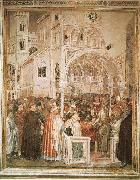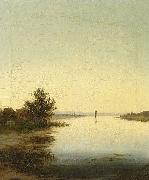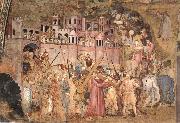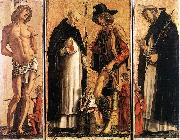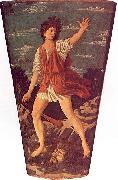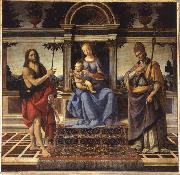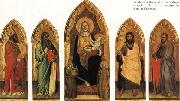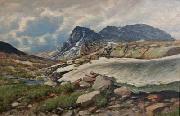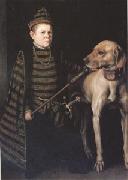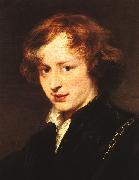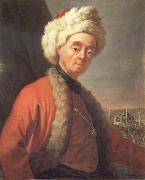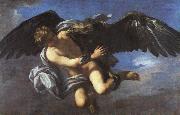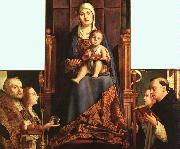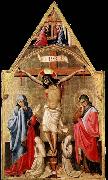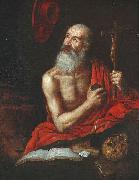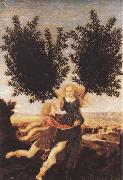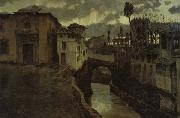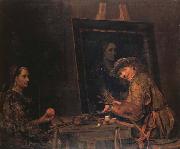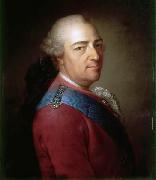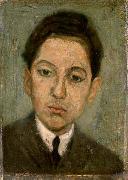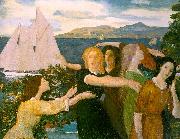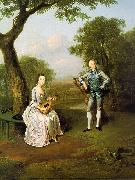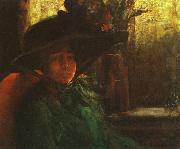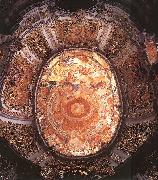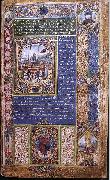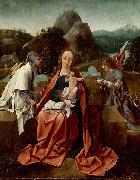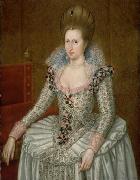|
|
|
|
|
|
|
|
|
|
 |
Andien de Clermont
|
|
Andien de Clermont (d.1783) was a French artist who worked in England in the 18th century (ca.1716-1756). He was particularly known for his decorative flower paintings in the Rococo style, and for "singeries, chinoiseries, and turqueries." He decorated interiors at Kirtlington Park, Langley Hall, Wentworth Castle, Wilton House, and "the second earl of Strafford's (now destroyed) dining room at No. 5 St. James's Square, London."
|
|
|
|
|
|
|
|
|
|
|
|
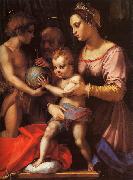 |
Andrea del Sarto
|
|
b.July 16, 1486, Florence
d.Sept. 28, 1530, Florence
Italian Andrea del Sarto Galleries |
|
|
|
|
|
|
|
|
|
 |
anna dorothea lisiewska therbusch
|
|
Lisiewski, Anna Dorothea (von) / Lisiewska-Therbusch, Anna Dorothea / Liszeswka, Anna Dorothea.
Anna Dorothea Therbusch (somtetimes Anna Dorothea Therbusch-Lisiewska, or Lisiervska/Lisziewska/Liesiewka (1721-1782) was a German painter.
|
|
|
|
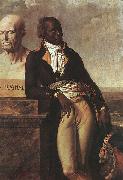 |
Anne-Louis Girodet de Roussy-Trioson
|
|
(also given as Anne-Louis Girodet de Roucy-Triosson, Anne-Louis Girodet-Trioson) January 5, 1767 - December 9, 1824), was a French painter and pupil of Jacques-Louis David, who was part of the beginning of the Romantic movement by adding elements of eroticism through his paintings. Girodet is remembered for his precise and clear style and for his paintings of members of the Napoleonic family.
|
|
|
|
 |
anthonis van dyck
|
|
Flemish painter and draughtsman, active also in Italy and England. He was the leading Flemish painter after Rubens in the first half of the 17th century and in the 18th century was often considered no less than his match. A number of van Dyck's studies in oil of characterful heads were included in Rubens's estate inventory in 1640, where they were distinguished neither in quality nor in purpose from those stocked by the older master. Although frustrated as a designer of tapestry and, with an almost solitary exception, as a deviser of palatial decoration, van Dyck succeeded brilliantly as an etcher. He was also skilled at organizing reproductive engravers in Antwerp to publish his works, in particular The Iconography (c. 1632-44), comprising scores of contemporary etched and engraved portraits, eventually numbering 100, by which election he revived the Renaissance tradition of promoting images of uomini illustri. His fame as a portrait painter in the cities of the southern Netherlands, as well as in London, Genoa, Rome and Palermo, has never been outshone; and from at least the early 18th century his full-length portraits were especially prized in Genoese, British and Flemish houses, where they were appreciated as much for their own sake as for the identities and families of the sitters.
|
|
|
|
|
|
 |
Anton Doll
|
|
painted Ansicht von Garmisch in 19th century
|
|
|
|
|
|
|
|
 |
antonin dvorak
|
|
Named after Prince Antoni Radziwiłł, who built a wooden summer residence here between 1822 and 1824 for his family. The Radziwiłł family played an important role in Polish?CLithuanian history over several centuries and owned lands larger than the state of Belgium. |
|
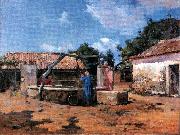 |
Antonio Carvalho de Silva Porto
|
|
(Porto, 11 November 1850 - Porto, 11 June 1893) was a Portuguese naturalist painter.
Born in Porto, he studied there under João Antenio Correia and T. Furtado, then continued his studies in Paris and Rome.
While in Paris he exhibited his work in the Salon and in the World´s Fair of 1878. In Paris, he studied with his friend João Marques de Oliveira, where they were pupils of Adolphe Yvon and Alexandre Cabanel. They became followers of the naturalist Barbizon School, and brought the new school of painting to Portugal, when they returned in 1879.
Silva Porto become one of the most acclaimed naturalist painters of his generation, showing the heritage of Jean-Baptiste Camille Corot and Charles-François Daubigny. Secondary effects from impressionism can sometimes be found in his paintings.
|
|
|
|
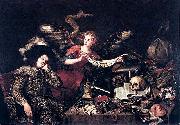 |
Antonio de Pereda
|
|
(ca. 1611-1678) was a Spanish Baroque-era painter , best known for his still lifes. Pereda was born in Valladolid. He was the eldest of three brothers from an artistic family. His father, mother and two brothers were all painters. He was educated in Madrid by Pedro de las Cuevas and was taken under the protective wing of the influential Giovanni Battista Crescenzi.After Crescenzi's death in 1635, Pereda was expelled from the court and began to take commissions from religious institutions. As well as still lifes and religious paintings, Pereda was known for his historical paintings such as the Relief of Genoa (1635) which was painted for the Buen Retiro Palace in Madrid as part of the same series as Velezquez's Surrender of Breda.
|
|
|
|
|
|
|
|
|
|
Apollonio di Giovanni
|
|
ca.1415-1465
Italian painter and illuminator. He was trained by illuminators in the circle of Bartolomeo di Fruosino and Battista di Biagio Sanguini (1393?C1451) and became a member of the Arte dei Medici e degli Speziali in 1442 and of the Compania di S Luca in 1443. Apollonio was influenced by Filippo Lippi, Lorenzo Ghiberti and Paolo Uccello. |
|
|
|
|
|
|
|
|
|
|
|
|
|
|
|
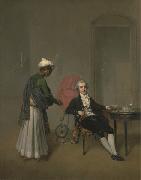 |
Arthur William Devis
|
|
(10 August 1762 - 11 February 1822) was an English painter of history paintings and portraits. He was appointed draughtsman in a voyage projected by the East India Company in 1783, under Captain Henry Wilson, in which he was wrecked on the Pelew Islands before proceeding to Canton and thence to Bengal. He painted portraits and historical subjects, sixty-five of which he exhibited (1779-1821) at the Royal Academy.
|
|
|
|
 |
Ary de Vois
|
|
was a Dutch Golden Age painter.
Ary de Vois was the son of Alewijn de Vois from Utrecht, who was organist in the Pieterskerk, Leiden, in 1635. Ary became a pupil in Utrecht of Nikolaus Knepfer, who also taught Jan Steen. Ary then returned to Leiden to study with Abraham van den Tempel, who lived there between 1648 and 1660. De Vois joined the Leiden Guild of St Luke on 16 October 1653, paying dues until 1677. He was dean in 1662-64, headman in 1664-65 and dean again from 1667-68. He married Maria van der Vecht, on 5 February 1656.
According to Houbraken his marriage caused a lull in his production, especially when he moved to Warmond where he took up fishing as a hobby. He had to move back to Leiden in order to keep his production levels high
|
|
|
|
|
|
|
|
|
|
|
|
|
|








